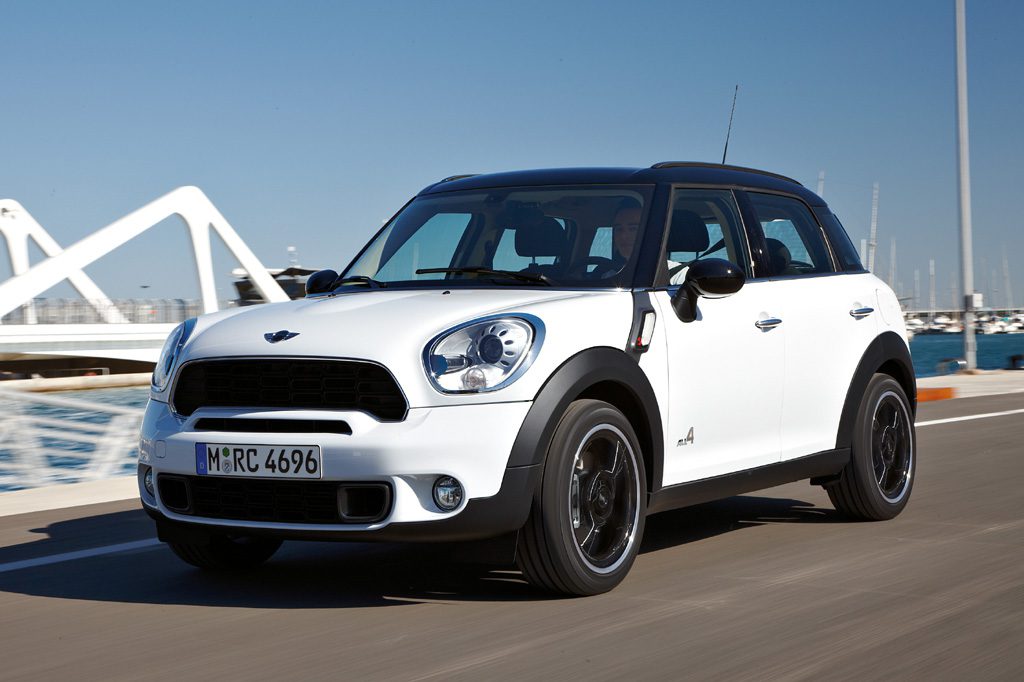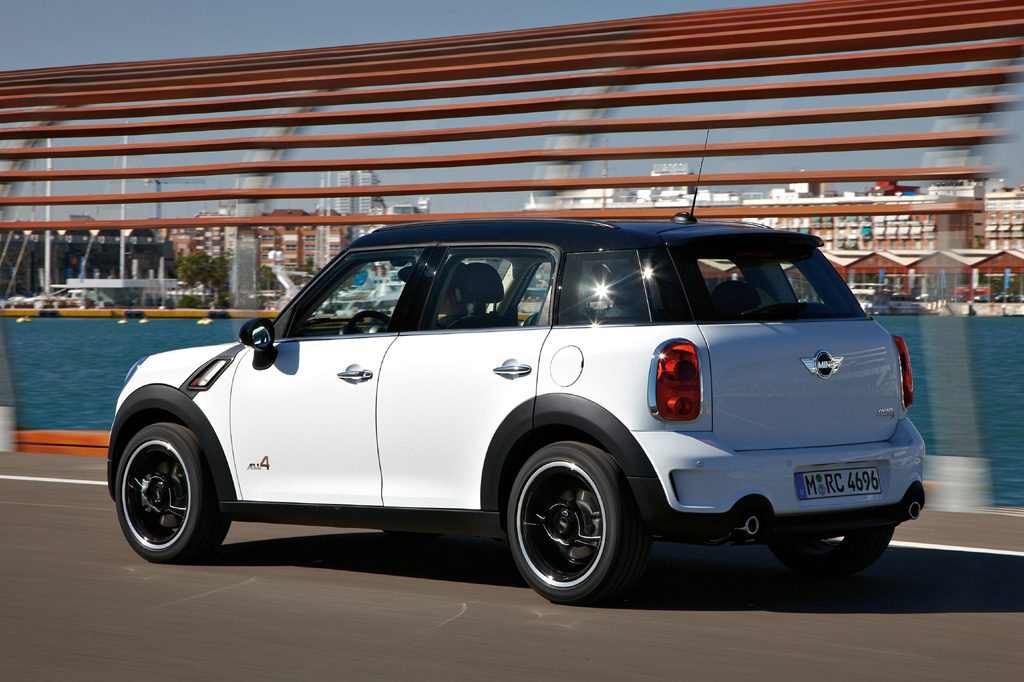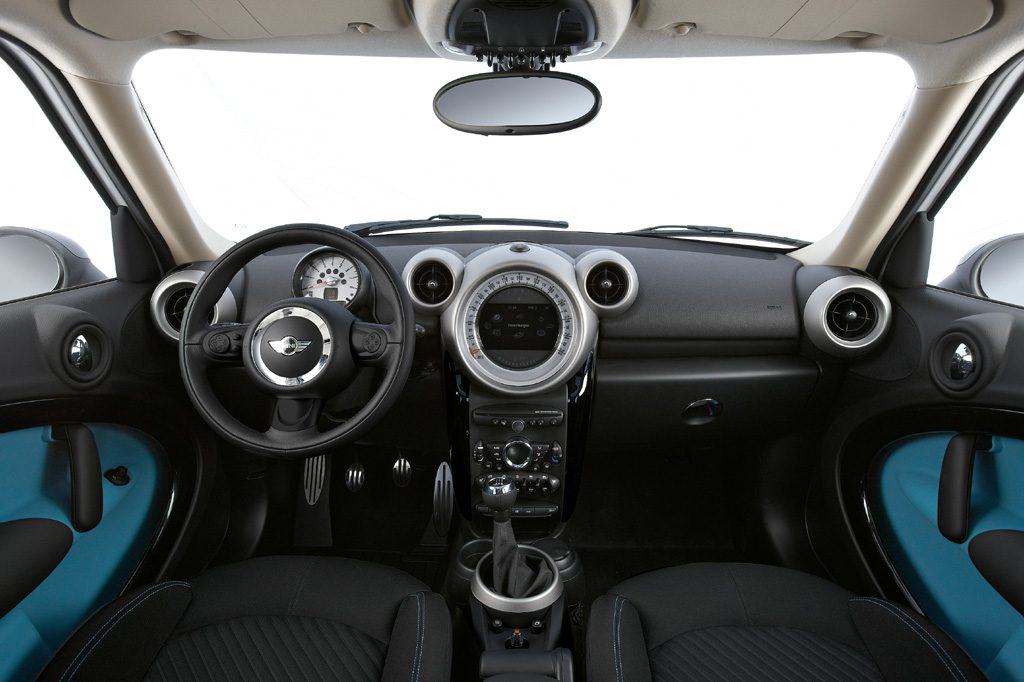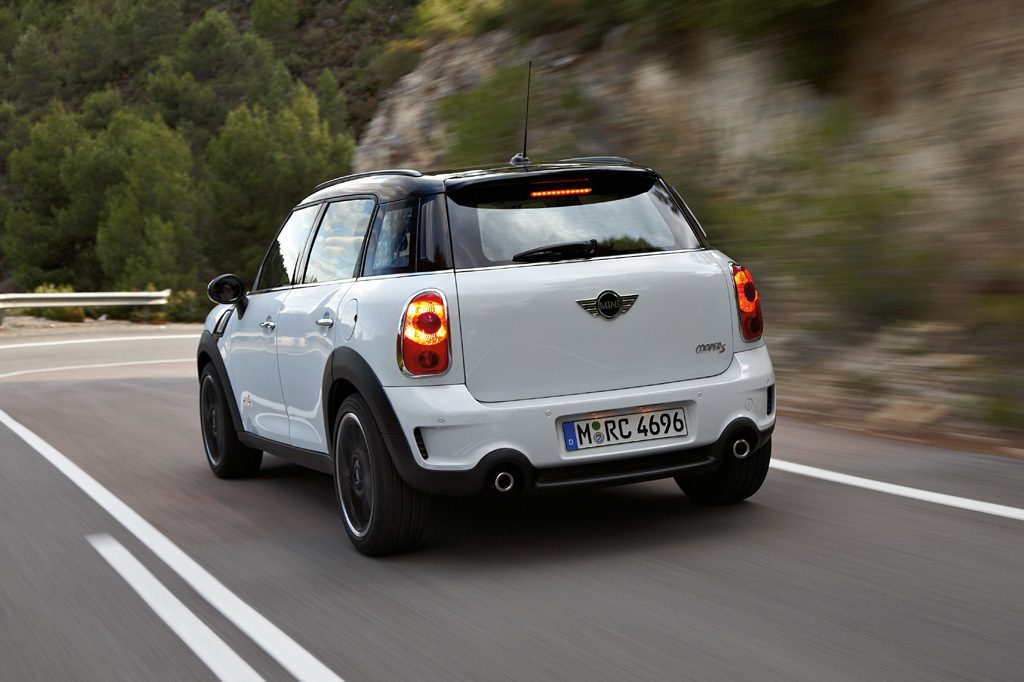| Compact SUV; Built in England |
|
|
| Good condition price range: $11,100 – $33,100* |

2011 Mini Cooper Countryman Front

2011 Mini Cooper Countryman Rear

2011 Mini Cooper Countryman Interior

2011 Mini Cooper Countryman Profile

2011 Mini Cooper Countryman Rear-2

2011 Mini Cooper Countryman Interior-2

2011 Mini Cooper Countryman Front-2
| Pros: |
|
| Cons: |
|
With this new four-door model, Mini brings its characteristic “go-kart” driving dynamics to the compact-SUV segment. Many thoughtful features, creative storage solutions, and customization options help it stand out in the compact-SUV crowd. Though it might not have the extra-tall ground clearance, sheer height, and high seating position of some competitors, the Countryman does offer fun-to-drive attributes, and Mini’s first AWD system. New-car pricing was similar to compact SUVs, but Minis are known to hold their value exceptionally well, so secondhand examples won’t be cheap.
Overview
The 2011 Mini Cooper Countryman was the latest addition to this brand’s lineup. Countryman was Mini’s first vehicle sold in the United States that had four full-size doors, and also the first to offer all-wheel drive. This wagon was a compact SUV that seated four. Like other Mini Cooper models, it came in Base and high-performance S models. All had standard front-wheel drive. Mini’s new “ALL4” all-wheel drive was available on the S model. Base versions used a 121-horsepower, 1.6-liter four-cylinder engine. S models got a turbocharged 181-horsepower, 1.6-liter four-cylinder. A six-speed manual transmission was standard, and a six-speed automatic was optional.
Standard safety features included all-disc antilock braking, traction control, an antiskid system, curtain side airbags, front side airbags, and a passenger knee airbag. The Countryman’s rear seats could slide fore and aft up to 5 inches to benefit either passenger or cargo room. Instead of a center console, Countryman had Mini’s “Center Rail” storage system, which extended through the front and rear passenger compartments. Center Rail included several removable storage bins, as well as cables for passengers to connect cell phones and MP3 players. Among the available features were a sport suspension, dual-panel panoramic sunroof, and adaptive xenon headlights. Also offered were several dealer-installed dress-up accessories. Note that Mini is owned by BMW. Although the Mini Countryman had no direct competitors, roughly comparable crossover SUVs included the Volkswagen Tiguan, Honda CR-V, Hyundai Tucson, and Toyota RAV4.
Yearly Updates
| 2012 Cooper Countryman Little was new for the 2012 Mini Cooper Countryman. |
| 2013 Cooper Countryman The 2013 Mini Cooper Countryman received an unusual number of changes for such a young model. An interior update included a revised dashboard; redesigned audio controls and door panels; power-window switches moved from the center console to the doors; and (as a 2012-model running change) a standard 40/20/40 rear bench seat that replaced twin buckets, which continued as a no-cost option. Bluetooth connectivity was now standard too, while satellite radio shifted to the options list. Finally, the Countryman added a racy John Cooper Works edition. |
| 2014 Cooper Countryman There were only minor changes for the 2014 Countryman. Headed side mirrors and washer jets were now standard, and there were new optional John Cooper Works appearance packages. |
